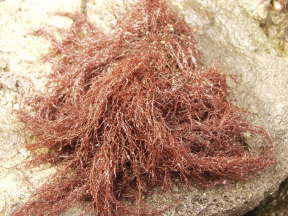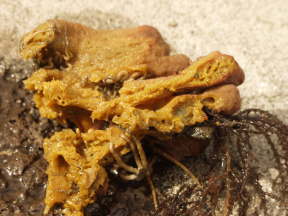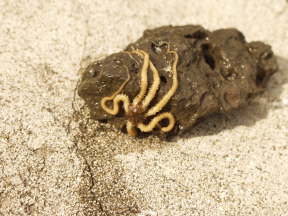DLNR and DOH – A Toxic Combination,
or, the Big Fish gets away
PART II
The following are some of the facts we have encountered during our investigation of problems causing damage to our State.
Facts about Oceanic Research
For more than twenty years Sea Life Park and the Oceanic Institute were permitted by the Hawaii State Department of Health, Department of Land and Natural Resources and the Hawaii State Department of Transportation (DOT) to dump their effluent wastewater into a culvert that drains into the ocean in the vicinity of Kau’po Beach, Waimanalo, Oahu.
Unfortunately the public was never told that this flow was effluent sewage from the nearby dolphin tanks, seal ponds and aquatic farm tanks. The public was never told that it was not a natural stream carrying natural mountain spring water, as many of them had been led to believe.
The effluent flowing from the Oceanic Institute also provided a perfect habitat for non-native species of marine life to thrive and compete with native species. When we initially advised the DOH of this problem we were told no such outfall existed and the Oceanic Institute was only allowed to discharge it’s effluent into injection wells.
 |

|
 |
On January 30, 2003, we filed a formal complaint against the Department of Health, Oceanic Institute, and Sea Life Park for the unlawful practice of discharging effluent or wastewater into the ocean. We filed the complaint because our previous attempts to request the Department of Health initiate legal action against Oceanic Institute and Sea Life Park for dumping wastewater generated from their aquarium and aquaculture businesses were unsuccessful.
After more that a year the outfall was finally shut down. But, we never received any formal notification from the DOH, DLNR, DOT or the EPA regarding this matter, nor have we been advised how the effluent is being handled now.
A funny but serious footnote is that Dr. Bruce Anderson, who was formerly the Director of the Department of Health that permitted the discharge became the Director of the Oceanic Institute after his departure from the DOH.
Facts About Maui Scrap Metal
On the Island of
Maui, hazardous waste was detected in soil at the Maui Scrap Metal
Company Inc’s facility in Waikapu, Maui, Hawaii. Clayton Group Services,
Inc. was retained to conduct a limited Phase II investigation of the
surface and near surface soils at the Maui Scrap Metal yard and two
adjacent parcels in Waikapu in order to assess the presence or absence
of chemically-impacted soils resulting from the storage and processing
of scrap metal at the site.
A total of three sites were identified for testing. Site A, with an
area of 8.5 acres, is located at Tax Map Key 2- 3-8-05-23. The other
two sites (B and C) are located on Alexander Baldwin, Inc. property,
south of the main facility, across east Waiko Road. Site B includes
approximately 5.5 acres of land, with a portion in TMK: 2-3-8-07-10.
Site C is approximately 7 acres, and includes a portion of two parcels,
TMK: 2-3-5-02.001-001 and (2) 3-6-02-03. The total land area of the
sites is approximately 21 acres.
Clayton’s report reflects that on July 13 and 14, 2004, they collected a
total of nine soil samples from three boreholes (three soil samples per
borehole), and sixteen soil samples from eight test pits (two soil
samples per test pit), from the three sites. The laboratory’s
analytical results from the sampling found that the level of PCB’s was
38 times higher than the allowable level. Benzo(a)pyrene was more than
double the level and TPH as heavy oil was 40% more than allowed.
It should be noted that the scrap metal facility was owned and operated
by Mr. Roger Apana, a relative of the former Maui Mayor Kimo Apana. The
Apana’s were also close family friends with Mr. Steven Chang, who is
currently Administrator of the Hawaii State Department of Health’s Solid
And Hazardous Waste Branch. Mr. Chang subsequently recused himself from
the matter, after we complained that there seemed to be special
treatment of Mr. Apana and Maui Scrap Metal, Inc.
Apana’s facility was an auto salvage facility that, for many years, operated without a Solid and Hazardous Waste Permit, with the explicit knowledge of the Department of Health. Envirowatch, Inc. documented and reported numerous violations to the DOH. We also found that the DOH cited the facility many years ago, and issued a cease and desist order. However, they then signed a consent decree and the violations continued, along with the buildup of even more hazardous waste in the soil.
These observations beg the question, where is the DLNR’s legislation to conduct warrantless searches, or searches without probable cause, at these facilities? What exactly is the DLNR doing about pollution from these facilities, and others like them?
![]() NEXT - Wahiawa Sewage Treatment Plant
NEXT - Wahiawa Sewage Treatment Plant